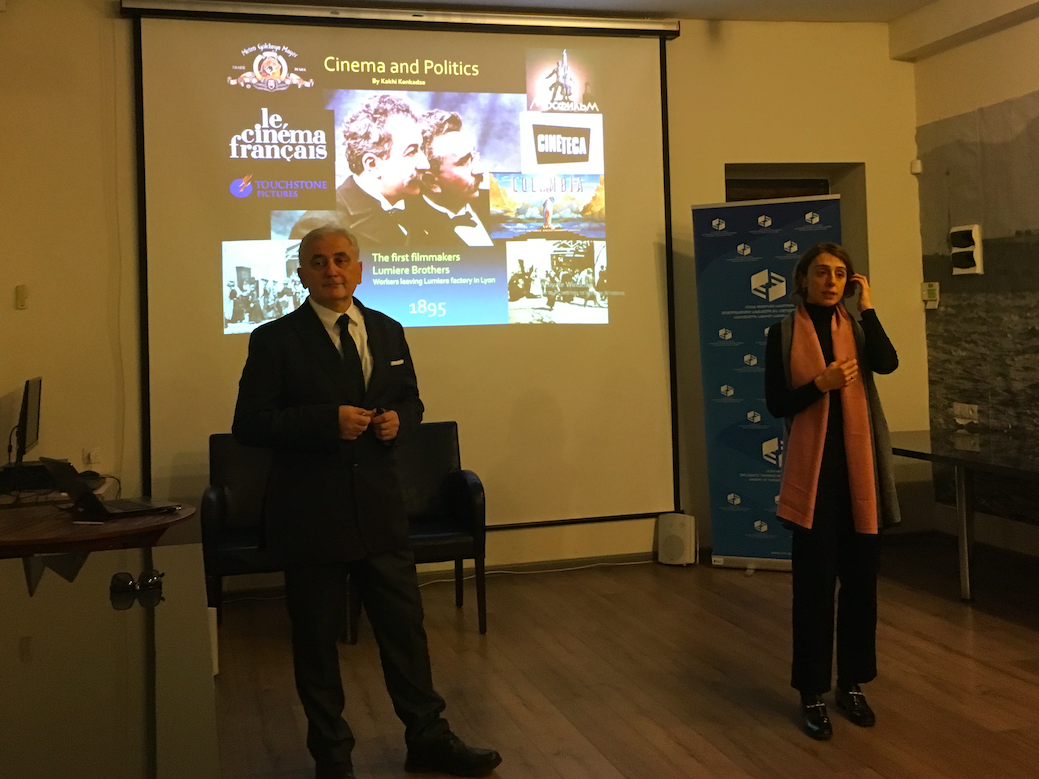
1
Feb
Cinema & Politics
On 1 February 2019, Professor Kakhi Kenkadze delivered a public lecture on Cinema & Politics. The Levan Mikeladze Diplomatic Training and Research Institute organised the event.

The Weatherhead Center researcher talked about the influence of world cinematography on citizens of various countries. Professor Kenkadze explained how the cinema became a massive tool for propaganda in the most influential countries of the 20th century, the United States of America and the Soviet Union. The speaker gave some vivid examples to illustrate how actors and movie directors also used their profession to make a strong and often scandalous political statement.

Starting from the Lumiere Brothers and embracing over a century-long history of cinematography, Professor Kenkadze discussed a film for each decade since the first filmmakers, underlining the ideological value of such classic films as The Immigrant (1917), Battleship Potemkin (1925), Tsirk (1936), Casablanca (1942), George Saakadze (1942), Skanderbeg (1953), Mackenna's Gold (1969), Two Men in Town (1972), Repentance (1984), and Braveheart (1995).

The attendees fully packed the cosy and small assembly room at Frontline Club Georgia on Friday late afternoon. People of different age groups and professions, students and professors, including the representatives of BRAMS Institute – Professor Diana Tkebuchava and Professor Maia Nadareishvili, attended the lecture.

